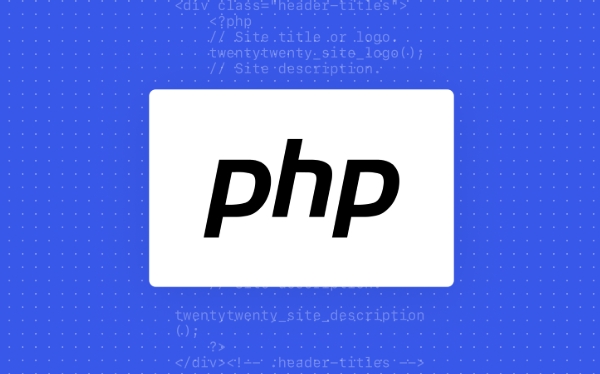Declaring the location of a function in PHP is important because it affects the availability of the function. 1. Functions are most commonly declared in .php files and loaded through include or require when needed; 2. They can be placed on the top of the script or in a dedicated function file, as long as they are defined before calling, it is recommended to centrally manage to improve maintenance; 3. In object-oriented programming, functions can be declared as class methods or in namespace to avoid naming conflicts; 4. The same function cannot be declared repeatedly, and conflicts can be avoided through include_once, require_once or function_exists checks. Ensuring that the function is defined before being called and is defined only once is the key to handling function declarations in PHP.

In PHP, where you declare a function matters because it affects how and where you can use it. The key is to make sure your functions are available when they're needed. Here's how to approach it.

1. Inside a PHP File (Most Common)
This is the standard way. You declare a function inside a .php file, and that file should be included or required wherever that function is needed.
Example:

<?php
function saysHello() {
echo "Hello!";
}
?>You can then include this file in another script:
<?php include 'functions.php'; saysHello(); // Outputs: Hello! ?>
Make sure the path in include or require is correct. If the function file isn't loaded, you'll get a fatal error when trying to call the function.

2. At the Top of a Script or in a Dedicated Functions File
Where exactly in the file you place your function doesn't matter much, as long as it's before it's called .
Most developers either:
- Put all functions in one file (like
functions.php) and include it at the top of every page - Or declare functions at the top of the current script before any logic that uses them
Tip: Don't scatter functions throughout your code. Keep them grouped together for easier maintenance.
3. Inside a Class or Namespace (For Organized Code)
If you're using object-oriented programming, you'll declare functions as methods inside classes.
Example:
<?php
class Greeter {
public function saysHello() {
echo "Hello from a class!";
}
}
?>Then use it like this:
<?php include 'Greeter.php'; $greeter = new Greeter(); $greeter->sayHello(); ?>
Also, if you're working on larger projects, wrapping functions in namespaces helps avoid naming conflicts.
Example with namespace:
<?php
namespace App\Utilities;
function saysHello() {
echo "Hello from a namespace!";
}
?>And to use it:
<?php use App\Utilities; Utilities\sayHello(); ?>
4. Don't Redefine Functions
One thing to watch out for: PHP doesn't allow redclaring the same function more than once. So if two included files both define sayHello() , your script will crash with a fatal error.
To avoid this:
- Use
include_onceorrequire_oncewhen loading function files - Or check if the function exists before declaring it:
<?php
if (!function_exists('sayHello')) {
function saysHello() {
echo "Hello!";
}
}
?>This is especially useful for themes or plugins in systems like WordPress.
Basically that's it. Just make sure that the function is available before calling, the location is flexible but the logic must be clear.
The above is the detailed content of Where to declare a php function?. For more information, please follow other related articles on the PHP Chinese website!

Hot AI Tools

Undress AI Tool
Undress images for free

Undresser.AI Undress
AI-powered app for creating realistic nude photos

AI Clothes Remover
Online AI tool for removing clothes from photos.

Clothoff.io
AI clothes remover

Video Face Swap
Swap faces in any video effortlessly with our completely free AI face swap tool!

Hot Article

Hot Tools

Notepad++7.3.1
Easy-to-use and free code editor

SublimeText3 Chinese version
Chinese version, very easy to use

Zend Studio 13.0.1
Powerful PHP integrated development environment

Dreamweaver CS6
Visual web development tools

SublimeText3 Mac version
God-level code editing software (SublimeText3)

Hot Topics
 php regex for password strength
Jul 03, 2025 am 10:33 AM
php regex for password strength
Jul 03, 2025 am 10:33 AM
To determine the strength of the password, it is necessary to combine regular and logical processing. The basic requirements include: 1. The length is no less than 8 digits; 2. At least containing lowercase letters, uppercase letters, and numbers; 3. Special character restrictions can be added; in terms of advanced aspects, continuous duplication of characters and incremental/decreasing sequences need to be avoided, which requires PHP function detection; at the same time, blacklists should be introduced to filter common weak passwords such as password and 123456; finally it is recommended to combine the zxcvbn library to improve the evaluation accuracy.
 How to combine two php arrays unique values?
Jul 02, 2025 pm 05:18 PM
How to combine two php arrays unique values?
Jul 02, 2025 pm 05:18 PM
To merge two PHP arrays and keep unique values, there are two main methods. 1. For index arrays or only deduplication, use array_merge and array_unique combinations: first merge array_merge($array1,$array2) and then use array_unique() to deduplicate them to finally get a new array containing all unique values; 2. For associative arrays and want to retain key-value pairs in the first array, use the operator: $result=$array1 $array2, which will ensure that the keys in the first array will not be overwritten by the second array. These two methods are applicable to different scenarios, depending on whether the key name is retained or only the focus is on
 PHP Variable Scope Explained
Jul 17, 2025 am 04:16 AM
PHP Variable Scope Explained
Jul 17, 2025 am 04:16 AM
Common problems and solutions for PHP variable scope include: 1. The global variable cannot be accessed within the function, and it needs to be passed in using the global keyword or parameter; 2. The static variable is declared with static, and it is only initialized once and the value is maintained between multiple calls; 3. Hyperglobal variables such as $_GET and $_POST can be used directly in any scope, but you need to pay attention to safe filtering; 4. Anonymous functions need to introduce parent scope variables through the use keyword, and when modifying external variables, you need to pass a reference. Mastering these rules can help avoid errors and improve code stability.
 How to handle File Uploads securely in PHP?
Jul 08, 2025 am 02:37 AM
How to handle File Uploads securely in PHP?
Jul 08, 2025 am 02:37 AM
To safely handle PHP file uploads, you need to verify the source and type, control the file name and path, set server restrictions, and process media files twice. 1. Verify the upload source to prevent CSRF through token and detect the real MIME type through finfo_file using whitelist control; 2. Rename the file to a random string and determine the extension to store it in a non-Web directory according to the detection type; 3. PHP configuration limits the upload size and temporary directory Nginx/Apache prohibits access to the upload directory; 4. The GD library resaves the pictures to clear potential malicious data.
 Commenting Out Code in PHP
Jul 18, 2025 am 04:57 AM
Commenting Out Code in PHP
Jul 18, 2025 am 04:57 AM
There are three common methods for PHP comment code: 1. Use // or # to block one line of code, and it is recommended to use //; 2. Use /.../ to wrap code blocks with multiple lines, which cannot be nested but can be crossed; 3. Combination skills comments such as using /if(){}/ to control logic blocks, or to improve efficiency with editor shortcut keys, you should pay attention to closing symbols and avoid nesting when using them.
 How Do Generators Work in PHP?
Jul 11, 2025 am 03:12 AM
How Do Generators Work in PHP?
Jul 11, 2025 am 03:12 AM
AgeneratorinPHPisamemory-efficientwaytoiterateoverlargedatasetsbyyieldingvaluesoneatatimeinsteadofreturningthemallatonce.1.Generatorsusetheyieldkeywordtoproducevaluesondemand,reducingmemoryusage.2.Theyareusefulforhandlingbigloops,readinglargefiles,or
 Tips for Writing PHP Comments
Jul 18, 2025 am 04:51 AM
Tips for Writing PHP Comments
Jul 18, 2025 am 04:51 AM
The key to writing PHP comments is to clarify the purpose and specifications. Comments should explain "why" rather than "what was done", avoiding redundancy or too simplicity. 1. Use a unified format, such as docblock (/*/) for class and method descriptions to improve readability and tool compatibility; 2. Emphasize the reasons behind the logic, such as why JS jumps need to be output manually; 3. Add an overview description before complex code, describe the process in steps, and help understand the overall idea; 4. Use TODO and FIXME rationally to mark to-do items and problems to facilitate subsequent tracking and collaboration. Good annotations can reduce communication costs and improve code maintenance efficiency.
 How to create an array in php?
Jul 02, 2025 pm 05:01 PM
How to create an array in php?
Jul 02, 2025 pm 05:01 PM
There are two ways to create an array in PHP: use the array() function or use brackets []. 1. Using the array() function is a traditional way, with good compatibility. Define index arrays such as $fruits=array("apple","banana","orange"), and associative arrays such as $user=array("name"=>"John","age"=>25); 2. Using [] is a simpler way to support since PHP5.4, such as $color






